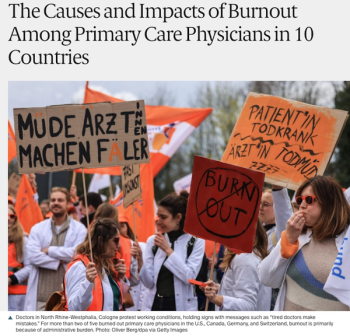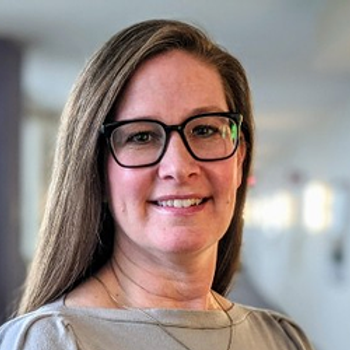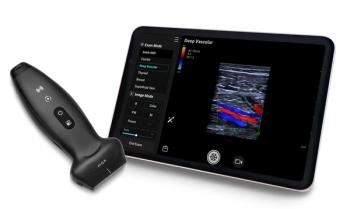
Top facts primary care physicians need to know about hospice care
As Medicare spending on hospice care has grown steadily in recent years-reaching $15.1 billion annually-the government has stepped up its regulatory scrutiny of hospice enrollment practices to make sure that only appropriate patients are being admitted.
As Medicare spending on
Some
More CMS news:
In January, the federal
The former change need not concern referring physicians, says Joan Harrold, MD, MPH FAAHPM FACP, vice president of medical services at Hospice & Community Care in Lancaster, Pennsylvania. Late referrals to hospice for patients who have only a few days to live occur more frequently than referrals that are made âtoo soon,â before they meet Medicareâs requirements for a documented prognosis of six months or less to live, assuming the disease runs its expected course.
More business news:
But referring physicians might notice that their hospice patients are now getting extra attention at the very end of life, when it is most needed. Thatâs a good thing, Harrold says.
âMedicare wants more RN and social work support for patients and families at the end of lifeâand is paying extra for it. I believe the SIA is a sincere effort on the governmentâs part to match payment to acuity of care,â she says.
Other recent regulatory changes include adding more quality measures to the Hospice Quality Reporting Program. Hospices are now mandated to submitdata on National Quality Forum-approved measures. CMS plans to start reporting these data to the public next year on a âHospice Compareâ website. The Medicare Care Choices Program is a five-year pilot to test a concurrent model of care where patients can receive both usual medical treatments and some of the supportive services of hospice care.
CMS and its âalphabet soupâ of contracted regulatory bodies have been stepping up post-payment audits of hospice claims, looking for those that donât meet Medicareâs clinical criteria for hospice eligibility. Sometimes these audits end up in court through False Claims Act lawsuits and in the press. But that doesnât mean the patients arenât very sick, Harrold says.
A terminal prognosis is difficult
âFirst of all, an accurate terminal prognosis is notoriously difficult to determine, unless the patient is imminently dying,â she says. Doctors might see a patient whoâs steadily getting worse yet still fails to meet Medicare criteria. But thatâs where the primary care physicianâs involvement can be helpful, sharing with the hospice the patientâs history and medical issues related or unrelated to the terminal prognosis.
âThe primary care physician is in a unique position to see a patientâs decline over months,â she says.
Blog:
âThe truth is, even today, a lot of folks who could benefit from hospice care never get itâor if they do, itâs only with a few days left before death,â notes Joe Rotella, MD, MBA, chief medical officer at the American Academy of Hospice and Palliative Medicine. âSo in 2016, we continue to have an access problem. If you can receive hospice care for more than just a few days, it can really make a difference,â he says. âOne message I would have for front-line doctors is this: donât hesitate to call hospice and ask for a consultation if you have any doubt. Think of those patients who continue to return to the hospital despite your best efforts, and have increasing symptoms.â
âIf the PCP disagrees with the hospiceâs determination that the patient is not eligible, they should collaborate with the hospice and provide more information. When talking to patients and families, the physician can acknowledge that Medicare has well-defined eligibility criteria, which may preclude their admission at this time,â he adds.
The family physicianâs role
Family physicians may not realize that they have the option to remain involved as the patientâs attending physician following a hospice referral, Harrold says, as itâs the patientâs choice.
Some doctors prefer to relinquish the responsibility of attending to the hospice medical director. There is also an option of co-management, where the PCP remains involved alongside the hospice physician.
Opinion:
âThere is some work involved with being a hospice patientâs attending physician, such as receiving updates, requests for medical orders and paperwork to sign,â she says. Physicians who want to go that route should be available to respond to such requests.
âI usually do not relinquish that responsibility,â says Robert L. Wergin, MD, FAAFP, a family physician in Milford, Nebraska, and board chair of the American Academy of Family Physicians. âThatâs my recommendation to other family physicians: remain as attending after you refer your patient to hospice. Keep those lines of communication open. With the new Medicare regulations, itâs even more important.â
âI tell my patients: âIâm not going to abandon you, even after you enter hospice.â I see them in the office when theyâre able, and communicate with the hospice team when theyâre not. I also make home visitsâas do many family physicians,â Wergin says. That makes a big difference to patients, he says. He adds that conversations about end-of-life choices typically start in his office, where he explains that there are limited options for further aggressive treatment and the family reports that symptoms are mounting.
Wergin also recommends that primary care physicians choose one or two reputable hospices in the community and develop good working relationships and lines of communication with them.
âI steer away from hospice companies that are more aggressive in their marketingâwhere it seems like they are hammers that see every patient as a nail.â
Wergin practices in a region with a sizeable Mennonite population. âI had a patient who was a Mennonite lay minister. He did not receive hospice care because his family was coping well, and they didnât need a nurse to explain about death and dying,â he recalls. âI was in the room with the dying patient, and his son got up, walked over to me and put his hand on my arm. âMy father loves you,â he said. âHeâs ready for whatâs to come. But weâre worried about you. Youâre hanging onto hope.â He gave me permission to make the transition that the family had already made.â
Newsletter
Stay informed and empowered with Medical Economics enewsletter, delivering expert insights, financial strategies, practice management tips and technology trends — tailored for today’s physicians.


















